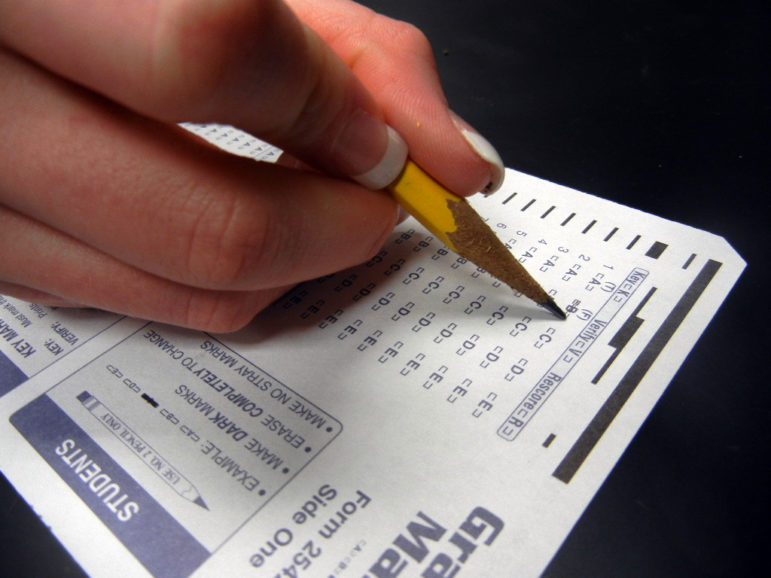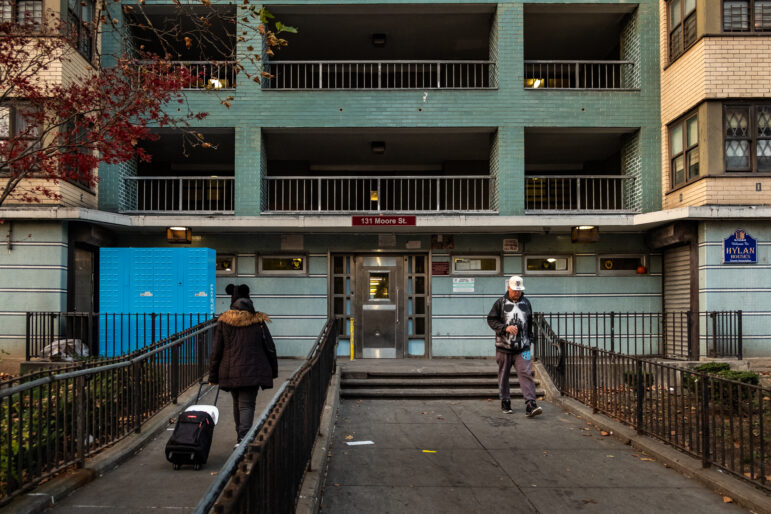
At the recent swearing-in celebration for NY State Senator Jessica Ramos in Queens, I asked a few NY State Senators about a recently passed bill that allows school districts to uncouple state test scores from teacher evaluations.
Senator Ramos voted for the bill but included a statement that it didn’t go far enough. Manhattan Senator Robert Jackson agreed the bill was headed in the right direction but said he was already preparing further legislation, concerned for example about the “group measures” provision where teachers “piggyback” evaluation scores from test results in another subject.
Dubbed “Common Core” exams until a name change last year, the state tests have been criticized widely by experts, principals, teachers and parents, resulting in about 1 in 5 students annually refusing to take the exams. This led to a moratorium on the use of state test scores in teacher evaluations, which were also ruled “arbitrary and capricious” in a 2016 State Supreme Court decision. Yet the largely pointless tests are still administered.
Because the law required a test score for evaluations, state test scores were simply replaced by scores from locally-chosen tests (which in my school are administered at the beginning and the end of the year, doubling the testing). But it gets even more insane.
Serving over 40 percent of the students in the whole state, New York City schools currently choose “local” tests from an approved list provided by the state, which includes a variety of third party, corporate tests. Testing in math and English is compulsory, which means four test days added to the four for state testing. But what about all the other subjects?
Originally teachers had to pick either math or English for a score, but each teacher who now chooses their own subject for their evaluation, now adds another two days of testing (depending on target group, this could affect a few classes or a whole grade).
This means schools that administer local exams for science and social studies will have at least 12 days of testing (not including separate tests for English learners). To reduce testing, teachers must agree to “piggyback” scores, a choice between subjecting kids to more testing versus wasting tax dollars in a sham compliance scheme.
Meanwhile, outside the city, hundreds of school districts negotiate agreements that use a reliably “safe” test, such as the Biology Regents, to assign scores for everyteacher’s evaluation. It’s understandable why districts agree to this sham, so they can test less, and just get back to teaching, but state officials, the unions and the media all buy in as well. It’s bad enough we rank teachers based on snapshots of student testing, but group measures are an affront to “science” as they cannot tell anything about a teacher’s practice. So how did we get here?
Unions go along with this arrangement because it protects teachers. The state union NYSUT has challenged the validity of the state test scores and supports parents’ right to “opt out”, but the UFT, the powerful city union, has resisted calls to publicly question the testing as the invisible formulas yield dramatically low numbers of “ineffective” teachers, and just in case someone does get an ineffective rating, there is a newly negotiated appeals process.
The latest bill passed quickly after union encouragement demanding more “local control,” but it did little to address the harm, waste and fraud of the underlying system. Evaluation metrics are now to be collectively bargained, district-by-district, all over the state, but what will be on the menu is already in question. NYSUT President Andy Pallotta promised “unit tests and portfolios” will be part of the mix, but because any alternative assessments must ultimately be approved by the state Education Department, observers are skeptical much will change.
Because the bill was recycled from the previous session when Republicans controlled the Senate (and blocked a clean vote), many question why a full repeal of the evaluation law wasn’t sought. When rank-and-file delegates were asked this at the 2017 NYSUT convention, a resolution passed unanimously that read, in part:
“NYSUT will oppose, through legislative lobbying efforts, any teacher evaluation regimen that mandates that student performance must be used as a measure of assessment.”
So this bill may reflect incrementalism, but union leadership did worry that opening up the entire law for replacement could give the upper hand to State Education Commissioner MaryEllen Elia. For now, it seems, they would rather fight 700 battles in local districts, relying on grassroots members to negotiate improvements.
Thus, we continue to tinker around the edges, as we have for years, unable to declare aloud that whole standardized testing regime is a flaming bag of poo, built on corruption —both pay-for-play and the revolving door. In New York the tests stand on shaky legal ground because the invisible formulas (ruled invalid in court) are required to be “transparent and available” according to the law that created them.
The testing has a long track record of failure, widening achievement gaps and provoking sustained parent boycotts. Perhaps most absurd are the backroom manipulations that change results after the tests are taken and scored. The State Ed Department routinely shifts the “cut scores,” or proficiency thresholds that can change passing to failing, or vice versa, with the snap of a finger. They also “withdraw” test questions retroactively, all done with no public notice or published criteria.
Some other hard truths we need to face are how many kids are not actually trying or bothering to read the test questions. Some kids nap, stare into space, or act out, and just fill in bubbles at the very end, disillusioned because the tests are simply not on their functional level.
Get the best of City Limits news in your inbox.
Select any of our free weekly newsletters and stay informed on the latest policy-focused, independent news.
Then we have the reality that multiple choice exams hinge on pure, dumb luck. The vast majority of students guess on some or all test questions. When scores fall on the borderline of passing/failing, it means one lucky or unlucky guess can make the difference. This is not a scientific metric of determining knowledge or ability, it’s a crapshoot.
Perhaps the city teacher union can one day negotiate to have the annual parent, teacher and student surveys include questions about the excessive, invasive, invalid, harmful, and counterproductive testing and scoring regime.
And perhaps the new crop of progressive lawmakers now up in Albany will lead efforts to improve the status quo. State Senators Ramos, Jackson, Zellnor Myrie, Rachel May, Alessandra Biaggi and James Skoufis have all indicated opposition to the state’s obsession with testing. It’s possible we may see legislation to actually reduce testing, and open hearings where teachers, parents and experts can testify, instead of the private deals negotiated as part of the big annual budget bill.
If the state Education Department were compelled to make their invisible formulas public, release long-overdue technical reports and finally “show their work”, it would be a welcome change, but for now, we await the governor’s signature on the evaluation bill, at which point we’ll start to see how over 700 different district-based negotiations go, and what kind of new, alternative assessments the state is willing to approve.
Jake Jacobs is a NYC teacher and pro-public education blogger.








